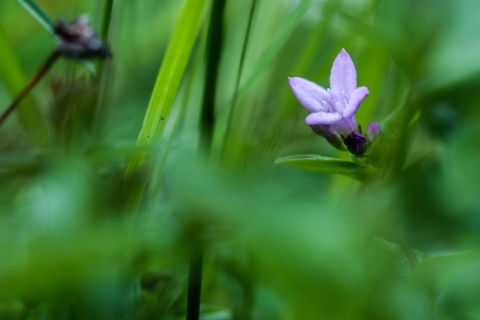Featured Species
Below is a list of federally threatened or endangered species which occur in our office's core work area of the mountain and upper Piedmont regions of North Carolina, or for which our staff have special expertise and experience. In many cases, the U.S. Fish and Wildlife Service collaborates on species conservation and recovery.
Species for which the Asheville Ecological Services Field Office has the lead responsibility for planning and coordinating recovery efforts:
Animals
- Carolina northern flying squirrel (Glaucomys sabrinus coloratus)
- Spotfin chub (Erimonax monachus)
- Spruce-fir moss spider (Microhexura montivaga)
- Noonday globe snail (Patera clarki nantahala)
- Appalachian elktoe (Alasmidonta raveneliana)
Plants
- Blue Ridge goldenrod (Solidago spithamaea)
- Bunched arrowhead (Sagittaria fasciculata)
- Dwarf-flowered heartleaf (Hexastylis naniflora)
- Heller's blazing star (Liatris helleri)
- Mountain golden heather (Hudsonia montana)
- Mountain sweet pitcher plant (Sarracenia rubra ssp. jonesii)
- Roan Mountain bluet (Hedyotis purpurea var. montana)
- Rock gnome lichen (Gymnoderma lineare)
- Schweinitz's sunflower (Helianthus schweinitzii)
- Small-anthered bittercress (Cardamine micranthera)
- Spreading avens (Geum radiatum)
- White irisette (Sisyrinchium dichotomum)
Other federally threatened or endangered species occurring in western North Carolina include:
Animals
- Gray bat (Myotis grisescens)
- Indiana bat (Myotis sodalis)
- Northern long-eared bat (Myotis septentrionalis)
- Virginia big-eared bat (Corynorhinus townsendii virginianus)
- Bog turtle (Glyptemys muhlenbergii)
- Roanoke logperch (Percina rex)
- Atlantic pigtoe (Fusconaia masoni)
- Carolina heelsplitter (Lasmigona decorata)
- James spinymussel (Parvaspina collina)
- Littlewing pearly mussel (Pegias fabula)




